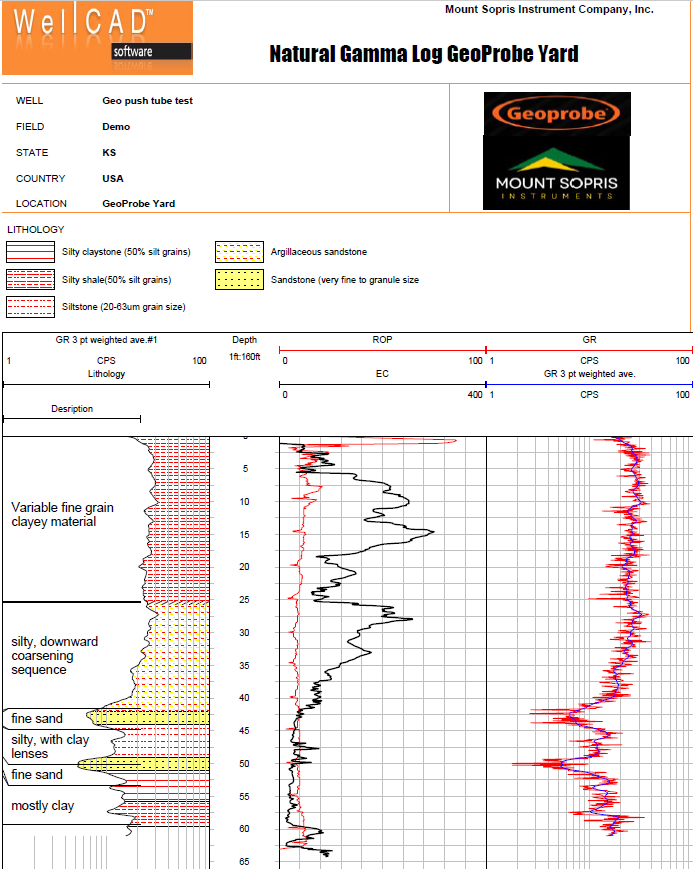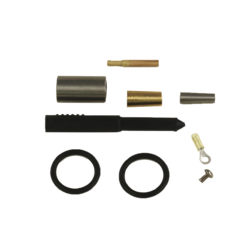19 GR Nano Gamma Ray Probe
from Mt Sopris
The 19GR nano gamma ray probe is ideal for use in volatile environments and when logging in direct push or cone penetrometer pipes as it is one of the thinnest gamma probes (19.5 mm diameter) on the market today. Due to its slender design, the probe utilises the 2000 – 1810 nano gamma ray head, which can be attached to a regular 0.125 Inch cable.
The instrument uses a sodium doped Caesium Iodide crystal sensor which has a higher density and strobing power to detect the subtle K, U and Th isotopic variations/ decay in the surrounding lithostratigraphical units either side of a borehole. Once deployed, the sensor emits pulses of light in response to being hit by the natural gamma rays produced by the surrounding rock formations. The light is then projected to a higher energy state/level using the photomultiplier tube and converted to electrical pulses up the cable line, which are received by the Matrix data logger, the data acquired can then be interpreted as gamma logs (Fig.1.)
Due to its intricate design the nano gamma probe is ideal for use in geological/geotechnical studies when characterizing/correlating boreholes, and when distinguishing different lithological units and estimating grainsize/clay content. In terms of the site conditions, this instrument can work in almost any environment and is capable of acquiring data through PVC, Steel and cement walls.
When placed in water (i.e. Groundwater) the buoyancy can push the probe upwards causing the cable to become distorted, in order to resolve this issue a small weight can be attached to the probe to ensure the cable is taut.

Operating Conditions
W - Water √
M - Mud √
D- Dry √
S - Steel √
P - PVC Borehole √
UC- Uncased √
*Centralization is not required
Product Dimensions
| Physical | Dimensions (L x W x H) | Weight |
|---|---|---|
| 19 GR Nano Gamma Ray Probe (instrument only) | 483 mm (without the weight) 584 mm (with the weight) x 19.05 mm (diameter) x 19.05 mm (diameter) | 4.96 kg (without the weight) and 7.43 kg (with the weight) |
Technical Specifications
| Measurement Point: | 102 mm (from the probe base, excluding the weight) 204 mm (from the probe base including the weight) |
|---|---|
| Minimum Temperature (°C): | 0°C |
| Maximum Temperature (°C): | 50°C |
| Maximum Pressure (bars): | 100 bar |
| Csl (Na) Crystal Sensor Size: | 105 mm x 762 mm |
| Photomultiplier tube (PMT): | Hamamatsu R9880 |
| Cable type and Compatibility: | Single Conductor compatible with the Matrix data logger |
| Tool Output/ Pulse type: | +ve pulse, 1-2 µsec wide and 8V (approx.) peak |
| Power: | 24VDC (Voltage) and 75mA (Current) |


